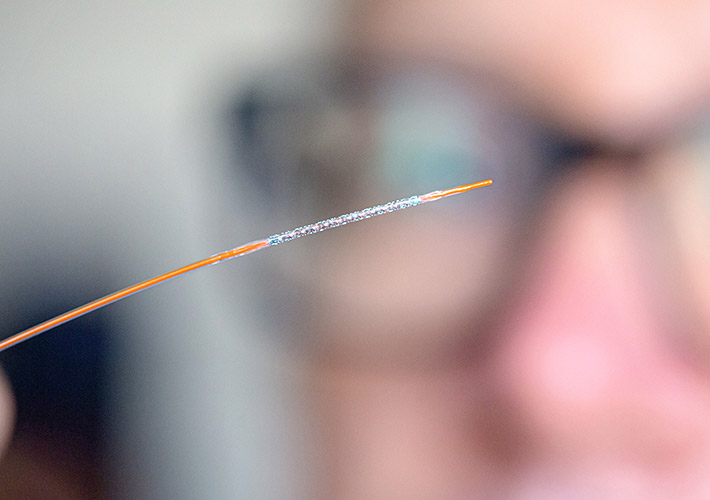Turn It Up
West is taking us through a quick description of how all this works in the real world, including inserting the OCT catheter — about a millimeter in diameter — to having you on your way in about an hour's time.
"So if you came in for a stent procedure in my lab in Cambridge when I was practicing, you'd walk in, you'd lie on the bed, you'd roll your sleeve up, I'd stick some local anesthetic over the artery in your wrist, the radial artery.
"I would put a plastic tube up your arm into the mouth of your coronary artery, I would squirt in some 'dye', some radiographic contrast, and take some X-ray pictures. I would then put a guidewire in — 14 thousandths of an inch in diameter — right the way from the wrist though that plastic tube down your artery past the narrowing.
"Before I started to try to do anything to the narrowing that I was going to treat, I would run the OCT catheter down, get real-time information — it's practically instantaneous, the processing — that will provide all of that critical information that I've just described.
"And after that, I would be able to make a plan. Then we'd balloon, place a stent, stretch it again with a balloon to high pressure, then we put the OCT down again afterward, have a look, congratulate ourselves on an amazing job and everyone would go home for a cup of tea."
Or maybe some of that craft beer he loves so much. And by the way, you've been awake this whole time.
Make no mistake, whatever he's serving, you'll be glad to have it. It's just what the doctors ordered in Beyond Intervention, a survey that found physicians view forward-thinking and innovative technologies as critical components to providing the best individualized care.








FOLLOW ABBOTT